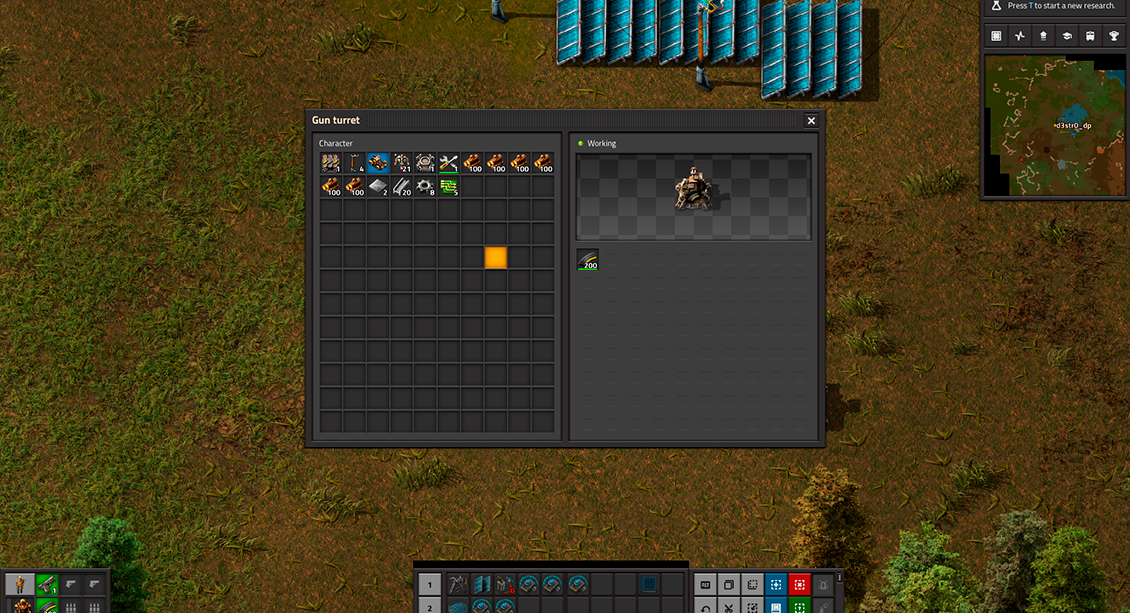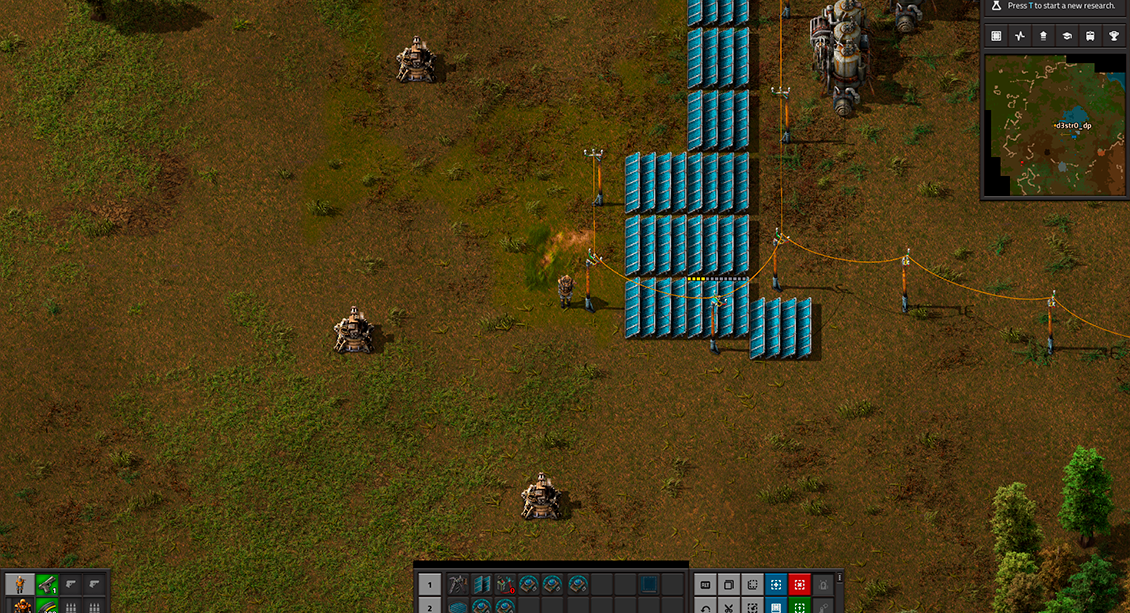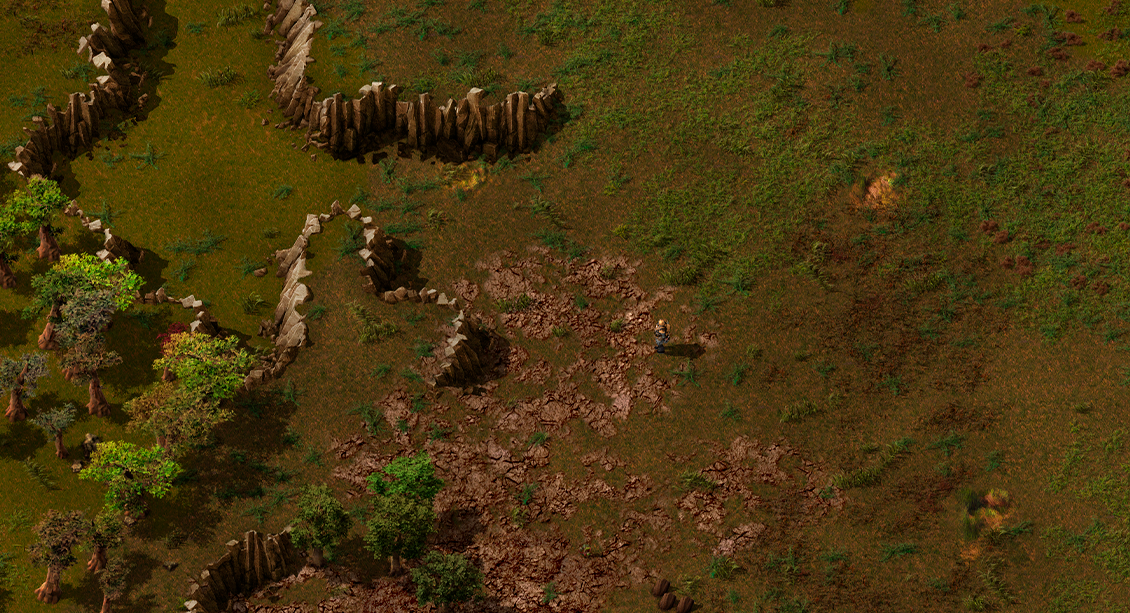Factorio - How To Destroy Nests

Make Your Own Factorio Server
Factorio, a popular sandbox game that combines automation, resource management, and base building, presents players with the challenge of defending their base against hordes of biters. To ensure the safety and expansion of your base, it is essential to understand effective strategies for destroying nests.
In this blog post, we will explore various approaches and considerations to help you navigate this crucial aspect of the game.
Do keep in mind that you need to learn how to make a Factorio server first. If you've accomplished that, let's move forward!
Early Game Approach
In the early stages of the game, your first objective should be to research Turrets and Automation, or Automation and Turrets, depending on the available technologies. These research options unlock the necessary tools to combat the biter threat effectively. Once researched, you can craft multiple turrets and ammunition, preparing yourself for the upcoming battles.By ensuring a sufficient supply of ammunition, you can venture into the nests within your pollution range and create a defensive perimeter. Clearing these immediate threats early on allows you to establish a solid foundation for your base, minimizing the risk of biter attacks.

Timing and Evolution Management
Destroying nests in Factorio has consequences that extend beyond immediate tactical gains. Each nest destruction increases the evolution factor of the biters, influencing their strength and behavior. It is crucial to find a delicate balance between eliminating immediate threats and managing the evolution of biters.Waiting too long to destroy nests can result in the evolution of more powerful enemies. Conversely, destroying nests too early may lead to the evolution of spitters, which possess long-range attacks that can pose a greater threat to your base. When deciding the timing for nest destruction, take into account the availability of resources, your defensive capabilities, and the potential impact on biter evolution.
Defensive Perimeter
In situations where the biter population is too high or nests are too numerous to eliminate individually, creating a defensive perimeter can be an effective strategy. This approach involves constructing walls and gun turrets to defend your base and prevent biters from infiltrating.By building a defensive perimeter, you establish a line of defense that allows you to manage the biter threat without the need to eradicate all nests. It is important to note that this strategy requires constant vigilance and maintenance, as the biters will continuously attempt to breach your defenses.

Combined Arms
Combining different types of defensive structures can significantly enhance your ability to fend off biter attacks. In Factorio, gun turrets and laser turrets are two primary options at your disposal.Gun turrets excel in delivering high damage output at close range, while laser turrets possess longer range and deal immediate damage. By strategically placing gun turrets along with laser turrets, you create a formidable defensive line that can overcome the shielding effect of spitters hiding behind the bolts emitted by laser turrets.
The combination of gun turrets and laser turrets is a powerful example of using a variety of defenses to maximize your chances of success. Experimenting with different defensive configurations can help you identify the most effective setup for your specific circumstances.
Expansion and Repopulation Considerations
After destroying nests, it is essential to consider the remaining worm structures, as well as any biters and spitters that survived the encounter. Worms, unlike biters, are stationary and cannot move. Therefore, leaving worms alive does not pose an immediate threat to your base.However, leaving biters and spitters alive provides them with the opportunity to expand and create new bases, leading to repopulation. If you choose to spare them, consider expanding your base away from their location to minimize the risk they pose to your infrastructure.

FAQ
What are some advanced tactics for destroying nests in Factorio?
As you progress in the game and face more challenging biter nests, advanced tactics can give you an edge in combat. One effective approach is utilizing artillery trains or artillery turrets. Artillery trains can be set up to automatically patrol and fire at nests within their range, making them ideal for long-range destruction. Alternatively, placing artillery turrets strategically around your base can provide a stationary artillery support system. By combining these advanced tactics with other defensive measures, you can establish a formidable line of defense against the biter threat.
How can I effectively manage the evolution of biters while destroying nests?
Managing the evolution of biters is a delicate balance that requires careful consideration. To control their evolution, you can limit pollution emissions by optimizing your factory's production and implementing efficiency modules in your machines. By reducing pollution, you slow down the rate at which biters evolve and become stronger. Additionally, consider selectively targeting nests instead of wiping out entire biter populations. This approach allows you to keep the threat level manageable while still reducing the immediate danger to your base.
Is there any benefit to leaving worms alive after destroying nests?
Although worms do not pose an immediate threat as they cannot move, leaving them alive can have strategic advantages. Worms act as a deterrent for biters, discouraging them from expanding their bases in the vicinity. By sparing worms, you can create a buffer zone around your base, making it harder for biters to encroach upon your territory. However, it's crucial to monitor their activity and plan your expansion carefully to ensure they don't become a hindrance in the long run.
Are there any alternative defensive strategies to consider?
While creating a defensive perimeter with walls and gun turrets is a popular strategy, there are alternative approaches worth exploring. One such strategy is using a "moat" system, where you surround your base with bodies of water to impede the biter's advance.
Even better, implementing a circuit network-based defense system can provide advanced control and automation, allowing you to optimize your defensive capabilities. Experimenting with different defensive strategies can lead to unique and effective solutions tailored to your specific game circumstances.
Can I destroy nests without increasing the evolution factor of biters?
Unfortunately, destroying nests will inevitably contribute to the evolution factor of biters in Factorio. However, you can mitigate its impact by using efficiency modules and pollution control methods to slow down the evolution process.
Remember that the evolution factor also increases through time, so it is important to strike a balance between nest destruction and keeping your base defenses strong. By managing the evolution factor effectively, you can maintain a manageable threat level and continue expanding your base without undue risk.
How does destroying nests impact resource availability in the game?
Destroying nests can have both positive and negative effects on resource availability. On the positive side, clearing nests expands your territory, allowing you to access new resource-rich areas. Additionally, reducing the biter threat in your pollution range can make resource gathering safer and more efficient. However, the evolution of biters resulting from nest destruction can lead to increased attacks on your resource extraction operations. Therefore, it's essential to strike a balance between nest destruction and resource utilization to ensure a steady supply while minimizing the risk of biter disruptions.
Final Thoughts
Factorio is a game that presents unique challenges with each playthrough. As such, it is crucial to adapt your strategies based on the specific circumstances of your game. Factors such as map settings, available resources, and your defensive capabilities will influence your decision-making process.Balancing the destruction of nests with the evolution of biters is key to maintaining a manageable threat level and ensuring the safety and expansion of your base. By carefully considering the strategies and considerations outlined in this article, you will be well-equipped to tackle the biter menace in Factorio and secure the future of your industrial empire.
Make Your Own Factorio Server
Copyright 2019-2025 © ScalaCube - All Rights Reserved.